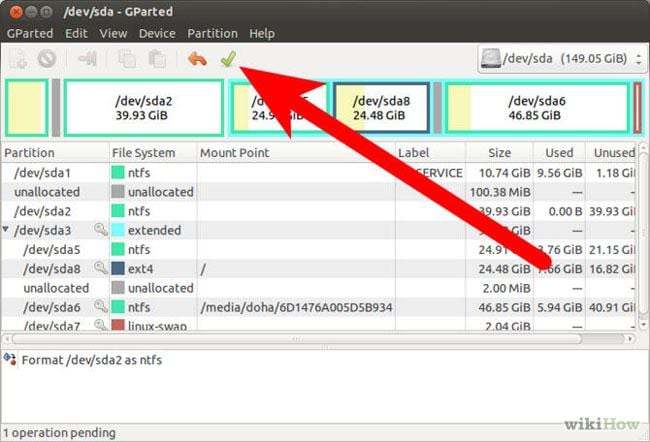

They use different oxides, and are NOT interchangeable. There are two distinct types of diskette media. In addition, it could read and write 720K (PC format) and 800K (Mac format) diskettes.Įxternal USB diskettes are PC-equivalent drives, and can read and write 1.4 MB diskettes only. The FDHD (Floppy Disk High Density), built-into Macs after the Mac II line and optional on some of them, could read and write 1.4 MB diskettes in both Mac and PC format. PC equivalents (without the variable speed feature) held only 720K and neither drive could read the other's data.
 Go to the left-hand side menu and click on the Files app.The original Mac 400K single sided diskette was based on a SONY mechanism that crammed more onto the diskette by varying the speed of the drive. Wait for the setup Window to launch and then click on the Try Ubuntu option. In the Grub menu, select the Try or install Ubuntu option. Select the Linux installation media and boot it up. Press the Esc key and power on your system to enter the boot devices menu. Plug the Linux installation media into your system. To access the USB disk using Linux installation media repeat the following steps: It will save the effort of searching for another computer, and you can successfully create a backup of the USB disk. If you don’t have a second system nearby, you can create a Linux installation media and use the Try Ubuntu mode to mount and access the contents of the USB disk. This method is more of a workaround to not lose your data. Use a Linux Installation Media to Access the USB Disk Drive Make sure you have an active internet connection to run the DISM scan without any issues. Follow that up with a DISM scan to fix the Windows installation image. Start with an SFC scan to check and replace any corrupt system files. If the check disk doesn’t do any good, and you still have the error, it is possible that your system files are missing or corrupt.
Go to the left-hand side menu and click on the Files app.The original Mac 400K single sided diskette was based on a SONY mechanism that crammed more onto the diskette by varying the speed of the drive. Wait for the setup Window to launch and then click on the Try Ubuntu option. In the Grub menu, select the Try or install Ubuntu option. Select the Linux installation media and boot it up. Press the Esc key and power on your system to enter the boot devices menu. Plug the Linux installation media into your system. To access the USB disk using Linux installation media repeat the following steps: It will save the effort of searching for another computer, and you can successfully create a backup of the USB disk. If you don’t have a second system nearby, you can create a Linux installation media and use the Try Ubuntu mode to mount and access the contents of the USB disk. This method is more of a workaround to not lose your data. Use a Linux Installation Media to Access the USB Disk Drive Make sure you have an active internet connection to run the DISM scan without any issues. Follow that up with a DISM scan to fix the Windows installation image. Start with an SFC scan to check and replace any corrupt system files. If the check disk doesn’t do any good, and you still have the error, it is possible that your system files are missing or corrupt.






 0 kommentar(er)
0 kommentar(er)
